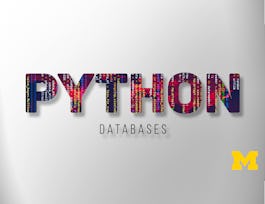The impact of technology and networks on our lives, culture, and society continues to increase. The very fact that you can take this course from anywhere in the world requires a technological infrastructure that was designed, engineered, and built over the past sixty years. To function in an information-centric world, we need to understand the workings of network technology. This course will open up the Internet and show you how it was created, who created it and how it works. Along the way we will meet many of the innovators who developed the Internet and Web technologies that we use today.


Internet History, Technology, and Security
Taught in English
Some content may not be translated
142,660 already enrolled
(2,632 reviews)
What you'll learn
Understand important technological issues currently facing society.
Understand how the internet and web are spaces for innovation and how you might fit into that innovation.
Details to know

Add to your LinkedIn profile
10 quizzes
See how employees at top companies are mastering in-demand skills


Earn a career certificate
Add this credential to your LinkedIn profile, resume, or CV
Share it on social media and in your performance review

There are 11 modules in this course
Welcome to the class. We will first look at the history of the Internet and Web, followed by a look at how the network works and then examine how we secure information on the Internet and Web.
What's included
3 videos3 readings
World War II emphasized the strategic importance of computation, communication, and information. There was unprecedented investment in the development of new technologies during the war. We start with Alan Turing and others at Bletchley Park.
What's included
7 videos1 quiz
In the 1960s and 1970s, there was a great deal of research done to build the first wide-area packet switched networks for the US Department of Defense. In the 1980s, the first “Internet” was formed to allow academic researchers to access supercomputer resources.
What's included
8 videos1 quiz
The World-Wide-Web was invented in 1990 but it was not an overnight success. But by 1994 - “the year of the web” - the web was being widely used and Internet usage was growing by leaps and bounds.
What's included
8 videos1 quiz
The late 1990’s saw the web and Internet used increasingly to revolutionize how business was done. Companies like Amazon were founded and grew very rapidly.
What's included
8 videos1 quiz
The Internet is designed based on a four-layer model. Each layer builds on the layers below it. The Link and Internetwork layers are the lowest layers of that model.
What's included
5 videos1 quiz
The Transport layer is built on the Internetwork layer and is what makes our network connections reliable.
What's included
5 videos1 quiz
With reliable “pipes” available from the Transport layer, we can build applications like web browsers, file transfer applications, or email clients and servers.
What's included
3 videos1 quiz
Using simple examples, we examing how to shield data from prying eyes and make sure that the data was not altered while in transit.
What's included
4 videos1 quiz
We apply the basic ideas of encryption and signing to who we actually secure the connections that we use on today’s Web and Internet.
What's included
4 videos1 quiz
What's included
1 video1 reading1 quiz
Instructor

Offered by
Recommended if you're interested in Computer Security and Networks

University of Michigan

University of Michigan

Coursera Project Network
Why people choose Coursera for their career




Learner reviews
Showing 3 of 2632
2,632 reviews
- 5 stars
83.04%
- 4 stars
13.95%
- 3 stars
2.24%
- 2 stars
0.34%
- 1 star
0.41%
New to Computer Security and Networks? Start here.

Open new doors with Coursera Plus
Unlimited access to 7,000+ world-class courses, hands-on projects, and job-ready certificate programs - all included in your subscription
Advance your career with an online degree
Earn a degree from world-class universities - 100% online
Join over 3,400 global companies that choose Coursera for Business
Upskill your employees to excel in the digital economy
Frequently asked questions
Access to lectures and assignments depends on your type of enrollment. If you take a course in audit mode, you will be able to see most course materials for free. To access graded assignments and to earn a Certificate, you will need to purchase the Certificate experience, during or after your audit. If you don't see the audit option:
The course may not offer an audit option. You can try a Free Trial instead, or apply for Financial Aid.
The course may offer 'Full Course, No Certificate' instead. This option lets you see all course materials, submit required assessments, and get a final grade. This also means that you will not be able to purchase a Certificate experience.
When you purchase a Certificate you get access to all course materials, including graded assignments. Upon completing the course, your electronic Certificate will be added to your Accomplishments page - from there, you can print your Certificate or add it to your LinkedIn profile. If you only want to read and view the course content, you can audit the course for free.
You will be eligible for a full refund until two weeks after your payment date, or (for courses that have just launched) until two weeks after the first session of the course begins, whichever is later. You cannot receive a refund once you’ve earned a Course Certificate, even if you complete the course within the two-week refund period. See our full refund policy.


